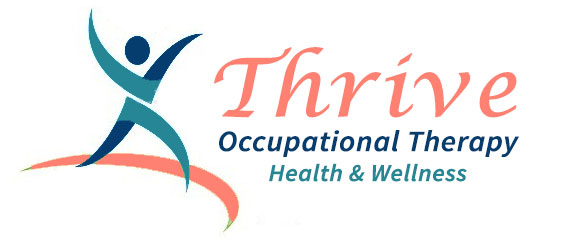My name is Julia Anderson and I am a third-year occupational therapy student at Creighton University. In this last semester of school, I am diving deep in the role of occupational therapy in topics such as maternal, pelvic, and women’s health. I am completing part of my time here at Thrive OT to gain further knowledge on these topics and gain more hands on experience. These blog pieces are reflections of what I have learned so far and would love to share with all of you.
For most of my life I though an injury was done healing once the wound was closed, or stitches removed. It was not until my clinical rotation at a Burn ICU that I truly learned healing continues past scar formation. Throughout my time there, I learned scar management, healing timelines, and the important steps of caring for scars.
The scar information I am sharing includes C-section, post operative, wound, and burn scars.
The process of wound healing and scarring lasts months up to years. Scar tissue is thick and lays down in a variety of directions, different than how other tissue lays. Many factors impact how our bodies scar. This includes genetics, hydration, sleep, nutrition, and activity level. Specifically, hydration, sleep, and vitamin rich nutrition aids in wound healing.
So, you may notice scars becoming thicker and changing color a few months after the wound or incision. This is due to scar tissue formation increasing during this timeframe. During this time, scars can cause discomfort, fascial restrictions, adhesions, and pain. If you are not already, this is an essential time to receive occupational therapy services for scar management.
What do we do at Thrive OT to address scars?
- Manual techniques: Scar tissue mobilization softens the tissue and allows the scar and surrounding areas to move with more ease. This will reduce adhesions and fascial restrictions occurring from scars. This will help you have more range of motion and less of a pulling sensation.
- Desensitization: Nerve recovery is also correlated with scar formation. Scars may start as itchy and then either become numb or hypersensitive. We can help with sensory recovery so you can wear clothes comfortably and decrease pain.
- Compression: If appropriate for your scar and location, compression can help manage scars. Compression helps to flatten and soften scar tissue. It is necessary for a therapist to assist with finding the right size, fit, and compression in the garment.
- Other Tips: Moisture is a crucial part at supporting tissue healing and improving scar tissue mobility. Our therapists can determine when this is right for you and guide through when and how to moisturize.
Additionally, at Thrive OT we are here to address scarring at any stage, whether it’s a month or 2 years old. It is commonly said that scars a fully formed at 1 year, but we can still address mobility and adhesions no matter the age of the scar.
Lastly, at Thrive OT we provide holistic care. We will look at all aspects of your health that may have been impacted by scarring. This includes mental health, internal physical wellbeing, posture, breathing, etc… We will treat the whole you while being scar informed.
Resources:
American Society for Surgery of the Hand. (2016) Scar Treatment. Handcare the upper Extremity Expert. https://www.assh.org/handcare/condition/scar-treatment
Darby, I., & Desmouliere, A. (2020). Scar formation: Cellular mechanisms. Textbook on Scar Management: State of the Art Management and Emerging Technologies (Ch 3). Springer. https://www.ncbi.nlm.nih.gov/books/NBK586083/
St. George’s University Hospitals. (2020). Scars and Scar Massage. https://www.stgeorges.nhs.uk/wp-content/uploads/2021/09/Scar-scar-massage.pdf
